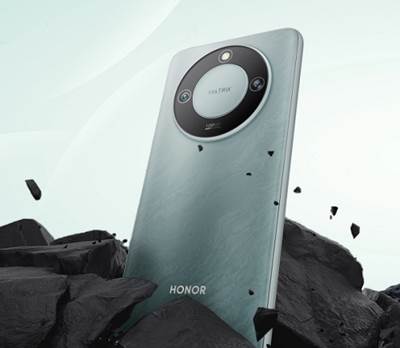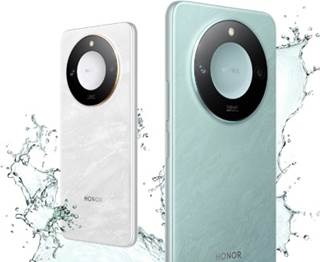Smartphones
have become essential tools in our daily lives, handling everything from
communication to banking. With prices rising and upgrade cycles lengthening,
durability is no longer a luxury—it’s a necessity. A cracked screen or water
damage can turn an expensive device into a paperweight overnight. Beyond just
surviving accidental drops, a truly durable phone should resist dust, moisture,
and long-term wear while maintaining performance over years. In this article,
we’ll break down the key factors that determine smartphone durability and how
to choose a device built to last.

Build Materials That Make a Difference
The
foundation of any durable smartphone lies in its materials. High-quality
aluminum or stainless-steel frames offer better structural integrity than
plastic, though they may add weight. Gorilla Glass or similar toughened glass
on the display resists scratches and minor impacts, while matte-finished
polycarbonate backs provide grip and reduce shatter risk. Some premium models
even use titanium for extreme strength without bulk. However, material choice
involves trade-offs—metal can interfere with wireless charging, while plastic
may feel less premium. The best designs balance robustness with practicality,
using reinforced corners or rubberized edges to absorb shock. For true
durability, look for phones with MIL-STD-810G certification, which indicates
rigorous testing for extreme conditions.
Water and Dust Resistance Explained
Water
resistance is measured by IP (Ingress Protection) ratings, where the first
digit represents dust resistance and the second indicates water protection. An
IP68 rating means a phone can survive immersion in 1.5 meters of water for 30
minutes, while IP53 merely guards against light splashes. Dustproofing (the
"6" in IP68) ensures no particles enter critical components, ideal
for beach or construction site use. However, IP ratings don’t cover all
scenarios—saltwater, high-pressure jets, or steam can still damage even highly
rated devices. Sealed ports and waterproof adhesive layers help, but gaskets
degrade over time. For long-term water resistance, avoid charging a wet phone
and rinse it with fresh water after saltwater exposure.
Impact Protection: Beyond Just a Good Case
While
cases help, a phone’s internal design determines its real-world survival rate.
Shock-absorbing materials like silicone or aerogel may line the interior, and
strategic component placement keeps fragile parts (e.g., cameras) away from
impact zones. Some manufacturers use "floating" display assemblies
that separate the screen from the frame to dissipate drop energy. Hinge
mechanisms in foldables add complexity but now incorporate ultra-thin steel
layers for repeated bending. For everyday durability, check if a phone has
passed drop tests onto concrete from at least 1 meter—though lab conditions
often differ from real-world pavement.
Software Durability Features
Durability
isn’t just physical; software optimizations extend a phone’s functional
lifespan. Efficient thermal management prevents overheating during gaming or
fast charging, which can degrade batteries. Background process limits stop
unused apps from draining resources, while storage defragmentation tools
maintain read/write speeds over time. Some systems include "battery
saver" modes that cap charging at 80% to reduce wear, or performance
throttling when components age. Regular security updates are equally critical—a
phone with 5+ years of patches remains usable far longer. Look for brands
committed to long-term support, as outdated software becomes a vulnerability
regardless of hardware condition.
Battery Longevity Considerations
Why Battery Quality Determines Overall Device
Lifespan
A
phone’s usability hinges on its battery health. Lithium-ion cells degrade
naturally, losing capacity after 300–500 full charge cycles. High-quality
batteries use stabilized electrolytes and robust separators to slow this
process, while cheaper alternatives may swell or fail prematurely. Temperature
management is crucial—consistent exposure to heat above 35°C (95°F) can halve a
battery’s lifespan. Software plays a role too; adaptive charging algorithms
that learn your routine (e.g., slowing overnight charging to finish at 100%
just before you wake up) significantly reduce wear. For heavy users, a phone
with a larger battery (e.g., 5,000mAh+) inherently lasts longer between
charges, reducing daily cycle counts.

How Charging Circuits Protect Your Phone
Modern
charging systems prevent overvoltage and overheating with multi-stage
safeguards. Gallium nitride (GaN) chargers minimize heat generation, while
phones with bidirectional charging ICs balance power distribution when using
features like reverse wireless charging. Some models include physical fuses
that disconnect the battery if voltage spikes occur. Avoid third-party chargers
without proper certification—poor voltage regulation can fry circuits over
time. For longevity, stick to manufacturer-recommended wattages; ultra-fast
charging (e.g., 100W+) trades convenience for accelerated battery
degradation.
Real-World Durability Tests
How Manufacturers Test Phone Durability
Lab
tests simulate years of abuse in days. Drop test rigs release phones onto
angled steel plates from varying heights, while tumble tests spin devices in a
rotating drum with abrasive surfaces. Environmental chambers subject phones to
extreme temperatures (-40°C to 85°C) and humidity cycles. Buttons and ports
endure hundreds of thousands of presses, and foldables undergo repeated
open/close motions. These controlled tests help standardize durability but
can’t replicate every real-world scenario—like a phone sliding off a car hood
onto gravel.
Third-Party Durability Ratings to Trust
Independent
reviewers like Consumer Reports or DXOMARK provide unbiased assessments. Look
for phones that survive "waist-high" drops onto concrete in multiple
orientations. YouTube stress testers often submerge devices beyond IP ratings
or subject them to bend tests—though these extreme scenarios may not reflect
normal use. For foldables, prioritize models tested for 200,000+ folds without
screen cracks. Warranty terms also indicate confidence; a 3-year coverage
suggests the manufacturer expects fewer failures.
Conclusion
Durability
combines robust materials, intelligent engineering, and long-term software
support. Prioritize phones with high IP ratings, MIL-STD-810G certification,
and proven drop resistance. A well-designed battery system, like the HONOR X9c Smart
is 5800mAh Super Durable Reliable Battery, ensures years of stable performance.
Pair these features with a protective case and mindful charging habits, and
your phone can outlast typical 2–3 year upgrade cycles. In an era of rising
costs and environmental awareness, investing in durability saves both money and
e-waste.
